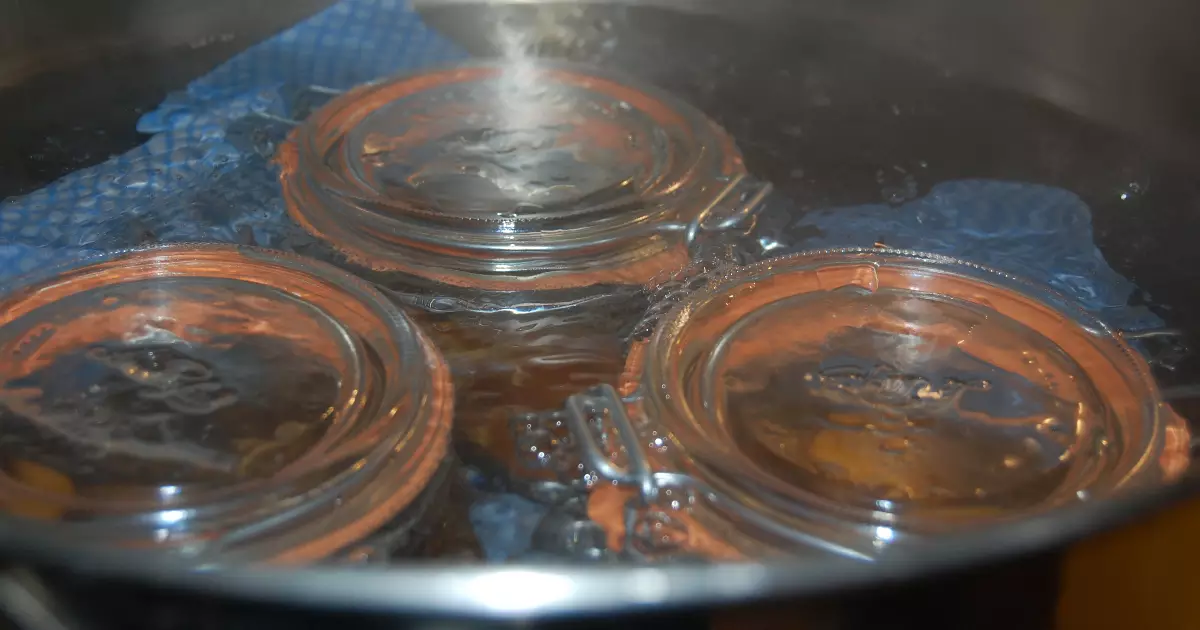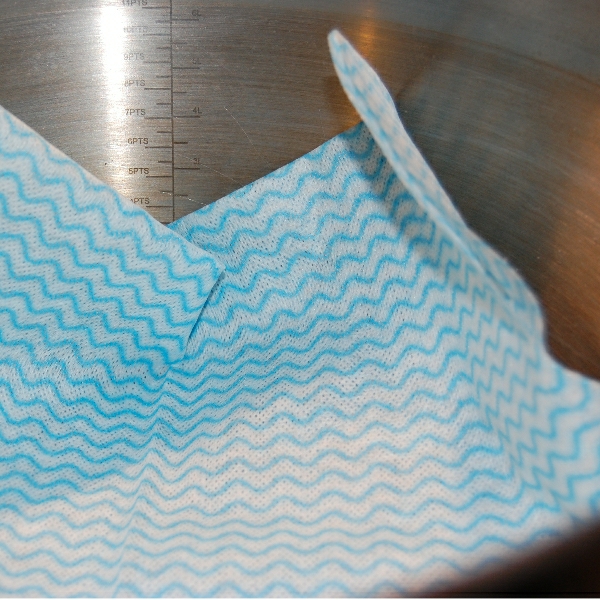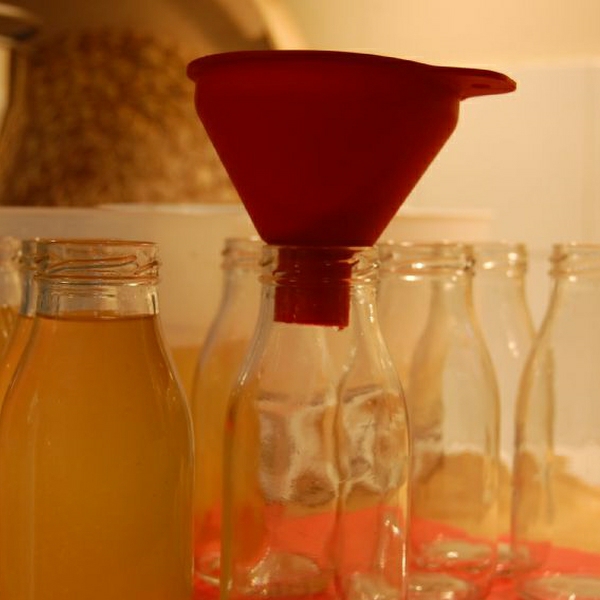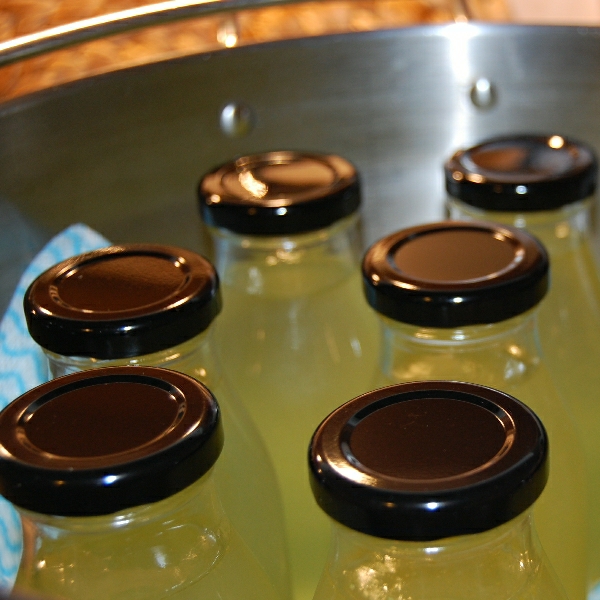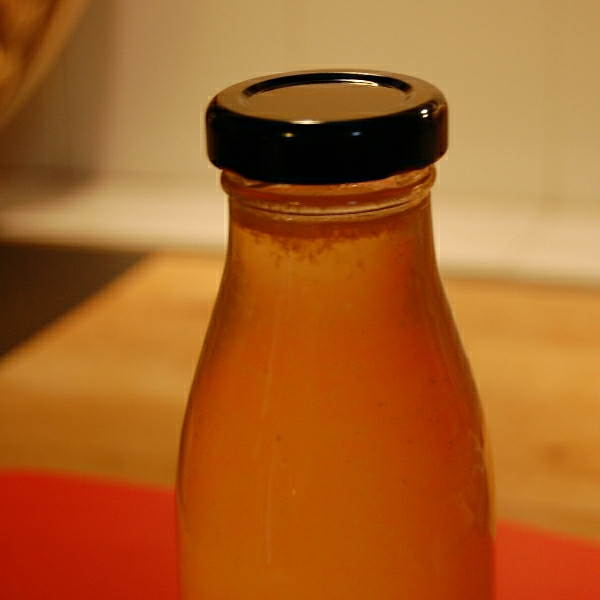If you are worried by instructions in a recipe to 'waterbath' the preserve you have made it may put you off making the recipe at all.
That is a shame as there are many lovely things to be made that can use this process and it is really easy. This process is suitable for high-acid foods such as fruits and tomatoes. Low-acid food such as peppers, green beans and the like need to be pressure canned to be made safe for long term storage at ambient temperature. Once processed the contents are shef-stable for at least a year.
Let's start with a cordial - Elderflower for example. So, follow the recipe up until the stage of putting the cordial into your bottles.
Select the tallest pan that you have and line the base with a folded tea-towel or cloth - even newspaper will do. I generally use a J Cloth. This helps to prevent the bottles clattering against the bottom of the pan and perhaps breaking.
Fill your bottles to around 2 cms or half an inch below the top of the bottle and fit the cap. Loosen the cap by about a quarter turn.
Place the pan on the hob and place the bottles into it without them touching each other if possible. Add cold water to the pan and pour in until the bottles or jars are covered if possible, if not, get the water as high as possible.
Turn on the heat and bring the temperature of the water up to a gentle simmer. Start timing and set the end time for 20 minutes. In the meantime start to prepare your counter top, protecting it with a heatproof board or folded towel.
When the time is up turn off the heat and carefully lift the bottles out onto the protected counter using jar tongs which are made for this purpose - if you have them. If not, ladle out enough water so that you can grip the neck of the bottles with a tea towel to protect your hands. Seal the caps tightly, immediately.
You will notice that the contents have expanded in the heat to fill the bottles, pushing out the air from the gap. As they cool the level will shrink back to reveal the gap once more - but this time it will be a vacuum. Nothing can grow in a vacuum - no yeasts, moulds or bacteria so the contents will be perfectly safe for at least a year at ambient temperature. Leave them until cold before labelling and then storing somewhere cool and away from strong sunlight.
And that's it. I told you it was easy!

